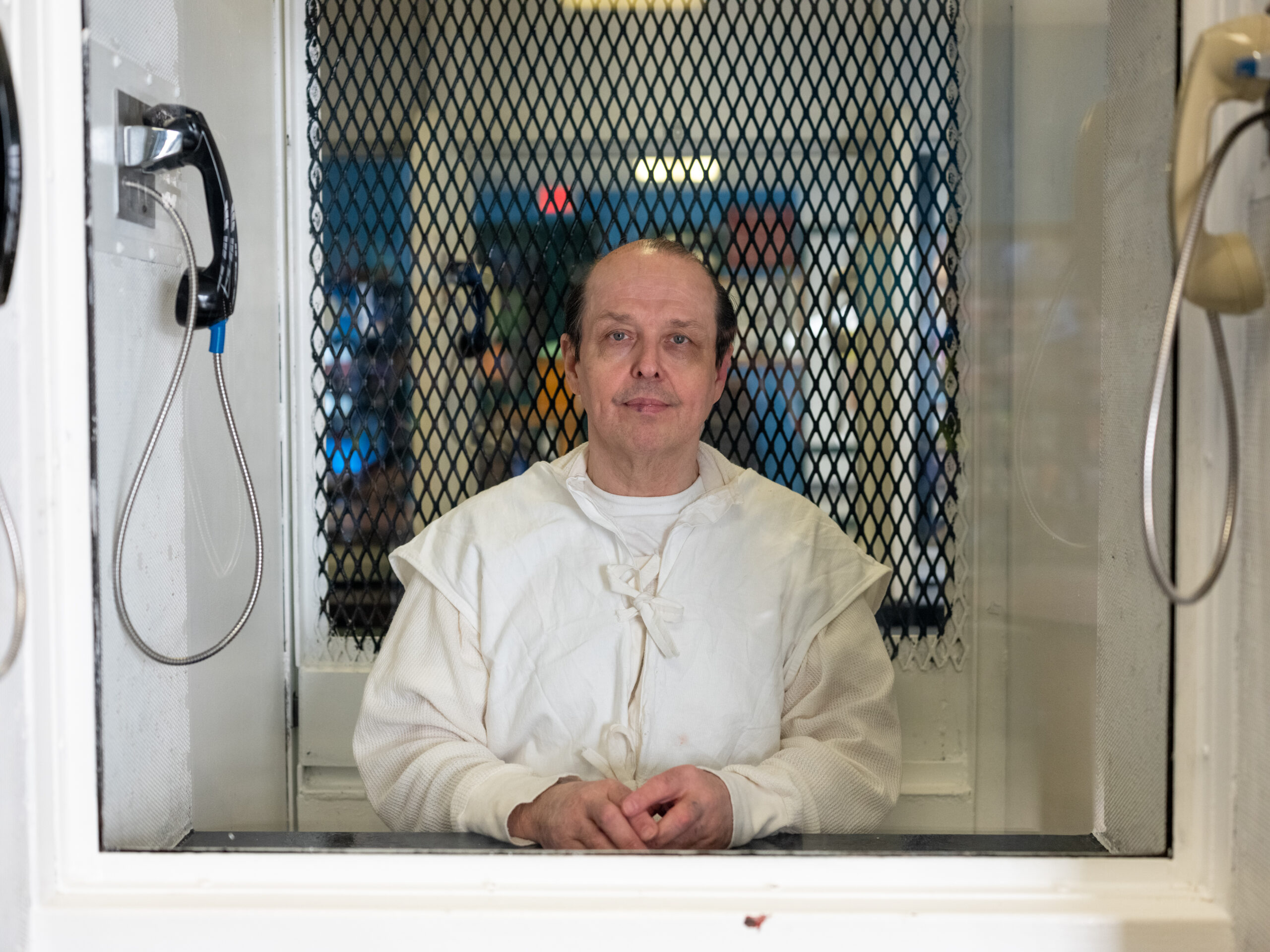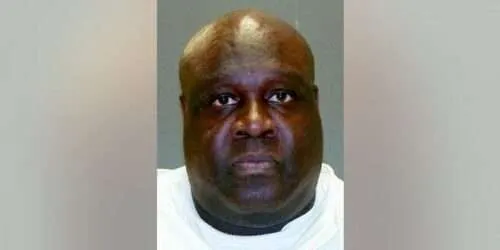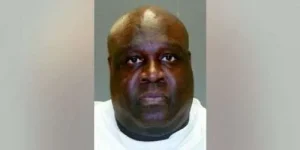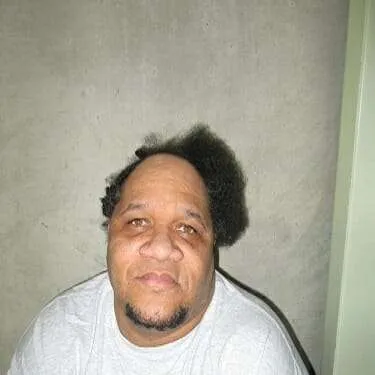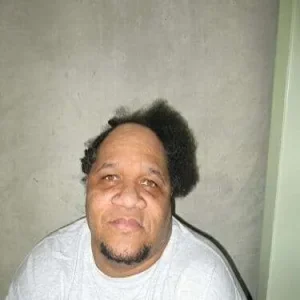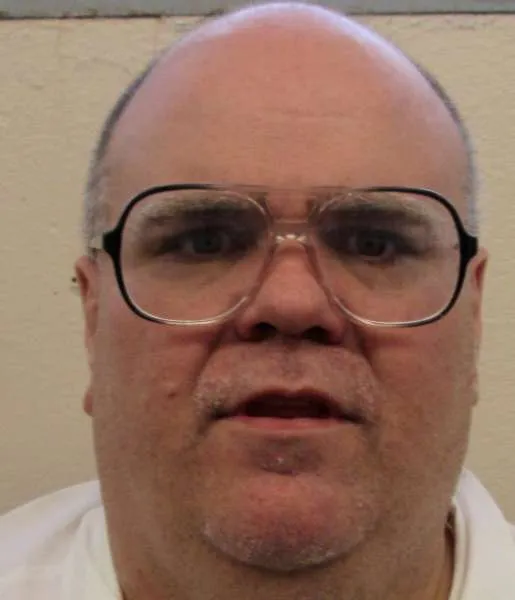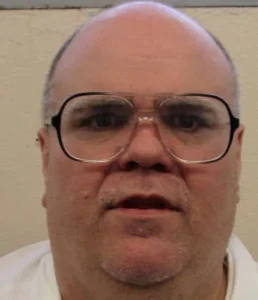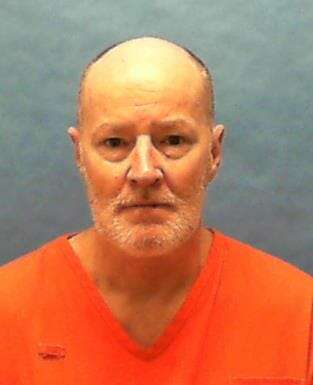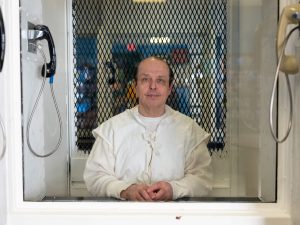
The State of Texas is getting ready to execute Robert Roberson on Thursday, October 17 2024 for the murder of his two year old daughter Nikki back in 2002
According to court documents Robert Roberson would bring his daughter to an emergency room in Palestine Texas and the nurses and doctors immediately believed that the toddler was a victim of abuse due to bruising on her body. The doctors would declare that the little girl died from shaken baby syndrome.
Police would then say that Robert Roberson lack of reaction proved that he had murdered the child. Roberson who is autistic would be arrested and charged with murder
Robert Roberson would be convicted and sentenced to death
Since then Roberson lawyers have said that the shaken baby syndrome was a misdiagnosis and that Nikki Roberson died from sepsis caused from double pneumonia on top of the effects of medications which were later considered to be unfit to give to a young child
So far all efforts from Robert Roberson lawyers have had little effect and Texas is planning on executing Roberson by lethal injection on Thursday
Update – Robert Roberson execution was called off ninety minutes before he was scheduled to be executed as a judge wanted to review the case further
Robert Roberson Execution News
Texas this week plans to execute Robert Roberson, whose attorneys say was wrongfully convicted of murdering his 2-year-old daughter more than 20 years ago.
His advocates contend Roberson’s sickly toddler, Nikki Curtis, died of double pneumonia that had progressed to sepsis, her illness further exacerbated by a combination of medicines now seen as unsuitable for children.
But when Roberson took Nikki to a hospital, doctors and nurses immediately diagnosed her with suspected abuse based on bruises and injuries to Nikki’s head, including severe brain swelling and bleeding in her brain and at the back of her eyes, court documents show.
The inmate’s attorneys call that a misdiagnosis – and also discredit shaken baby syndrome on its face, despite broad consensus among pediatricians it is legitimate.
The lawyers say, too, Roberson’s behavior in the hospital was misjudged. His strange, “flat” demeanor, then viewed by medical staff and police as evidence of his guilt, was a manifestation of Roberson’s autism, which went undiagnosed until 2018.
“It wasn’t a crime committed,” Roberson, 57, told CNN about a week before his scheduled lethal injection. “I was falsely, wrongly convicted of a crime – they said it was a crime, but it wasn’t no crime and stuff because I had a sick little girl, you know?”
Still, Texas intends to kill Roberson on Thursday in what his attorneys say would make him the first person in the United States executed on a shaken baby syndrome-based conviction as the diagnosis comes under increasing scrutiny in US courts.
His innocence claim also highlights an inherent risk of capital punishment: a potentially innocent person could be put to death. At least 200 people – 18 in Texas – have been exonerated since 1973 after being convicted and sentenced to die, the Death Penalty Information Center finds.
Among advocates for Roberson are the Innocence Project, autism advocacy groups concerned about the role his disability may have played in his conviction, a bipartisan group of more than 80 Texas legislators and the famous courtroom thriller author John Grisham.
Also in Roberson’s corner is Brian Wharton, a former Palestine, Texas, detective who regrets his part in what he now feels was a too-narrowly focused investigation into Nikki’s death. The shaken baby syndrome diagnosis from doctors and nurses, their emotional response to Nikki’s condition and Roberson’s odd reaction all stacked against the then-suspect, said Wharton.
“Those two things are playing against each other – the emotional upheaval of the ER staff alongside the father who is just there,” he told CNN. “And then when you add to that this accusation of shaken baby syndrome, that affirms for you all the emotions you had in the ER and makes that flat affect much more suspect.”
“The investigative or the suspicious mind takes over and leads the investigation,” he said. “Very early on, Robert was the focus of everything to the exclusion of any other possibilities.”
Roberson’s attorneys are not disputing that babies can and do die from being shaken. But they contend that more benign explanations, including illness, can mimic the symptoms of shaking, and those alternative explanations should be ruled out before a medical expert testifies to a certainty that the cause of death was abuse.
Shaken baby syndrome is accepted as a valid diagnosis by the American Academy of Pediatrics and supported by child abuse pediatricians who spoke with CNN. The condition, first described in the mid-1970s, has for the past 15 or so years been considered a type of “abusive head trauma” – a broader term used to reflect actions other than shaking, like an impact to a child’s head.
Abusive head trauma generally occurs when a frustrated parent or caregiver violently shakes a child and/or causes a blunt impact injury, the US Centers for Disease Control and Prevention and others say. It is the leading cause of child abuse deaths in children under age 5, the CDC says.
“There really is not a controversy in medicine about the existence of abusive head trauma. The science behind it is really quite clear,” former American Academy of Pediatrics President Dr. Lee Savio Beers told CNN for a 2021 report on how abusive head trauma cases are not coming to trial due to unsubstantiated defense claims.
However, the decision around 2009 to refer to what had been known as shaken baby syndrome as abusive head trauma was “misinterpreted” by some in legal and medical circles as an indication of “doubt in” or “invalidation” of the diagnosis of the injury itself, the American Association of Pediatrics acknowledged in 2020. The group “continues to affirm the dangers and harms of shaking infants, continues to embrace the ‘shaken baby syndrome’ diagnosis as a valid subset of the (abusive head trauma) diagnosis, and encourages pediatric practitioners to educate community stakeholders when necessary,” it added.
Criminal defense lawyers also have oversimplified how doctors diagnose abusive head trauma, child abuse pediatricians say, noting many factors are considered to determine it.
The landscape has fueled a fierce debate now playing out at the intersection of medicine and the law – with Robert Roberson’s case at center stage this week.
“The conclusion is simply (Nikki) was a victim of abusive head trauma. Unequivocally,” Dr. Sandeep Narang, a child abuse pediatrician and a lawyer, said Tuesday after he was asked by a supporter of Roberson’s defense to review trial testimony in the case.
“I thought there (was a) reasonable basis, clear, reasonable basis to find this conviction,” Narang told CNN. “And I thought this case represented a high probability of abusive head trauma, given all the total findings in this case.”
Meanwhile, courts in at least 17 states and the US Army since 1992 have exonerated 32 people convicted in shaken baby syndrome cases, according to the National Registry of Exonerations.
Just this month, the Texas Court of Criminal Appeals ordered a new trial for a man sentenced to 35 years in prison after being convicted of injury to a child in a case that also relied on a shaken baby syndrome argument. In its ruling, the court wrote “scientific knowledge has evolved regarding SBS.”
While Robert Roberson’s conviction has been upheld on appeal, his attorneys continue to pursue that remedy. They’re due Tuesday in court to argue yet another aspect of Roberson’s case, they say, claiming the judge who scheduled his execution did not have appropriate jurisdiction and so the death warrant should be void.
They’ve also petitioned the Texas Pardons and Parole Board and Republican Gov. Greg Abbott for clemency, asking for Roberson’s punishment to be commuted to a lesser sentence or he be granted a 180-day reprieve to allow time for his appeals to be argued in court.
The Anderson County District Attorney did not respond to CNN’s requests for an interview.
The death of Nikki Curtis
Robert Roberson was charged with capital murder on February 1, 2002, one day after he took Nikki to a hospital in Palestine, Texas. She wasn’t breathing, and her skin was blue.
Due to Nikki’s injuries, medical personnel were soon suspicious, and a nurse called police. Nikki, meanwhile, was flown via helicopter to a children’s hospital in Dallas, where she was later taken off life support and died.
Robert Roberson, who has three other children, had gotten custody of Nikki just two months earlier. He had learned of her only after her birth, and she spent most of her life in the custody of her maternal grandparents, who eventually agreed Roberson should have custody, court records show.
Robert Roberson told investigators he had picked the toddler up on January 30, 2002, from her maternal grandparents’ house, taken her home, put on a movie and gone to sleep in the same bed as her, the complaint against him says. They were alone.
Robert Roberson says he woke in the night to Nikki’s cries and found she had fallen 1 to 2 feet off the bed to the floor. He saw blood on her lips and a bruise under her chin, he told police per the complaint, and wiped the blood away with a washcloth. He kept her up for two hours to make sure she was OK, he said, and they eventually fell back asleep. When Roberson got up in the morning, Nikki was unresponsive, he said.
“I carried her to the hospital and stuff, you know,” he told CNN last week. “I didn’t have nothing to hide.”
A pediatrician specializing in child maltreatment at the hospital in Dallas told police Nikki was a victim of abuse. The girl’s injuries were “indicative of a shaken impact syndrome,” Dr. Janet Squires wrote in an affidavit. The Dallas County medical examiner who performed Nikki’s autopsy determined she died of blunt force head injuries and ruled the manner of death a homicide.
At trial, the state called 12 witnesses, court records show. They included Squires, who testified CT scans showed Nikki’s brain was swollen and there was blood under her skull and behind her eyes. The injuries, Squires said, could not have been explained by a “simple impact,” dismissing Roberson’s explanation about the girl’s fall off the bed.
“It’s a very violent forceful act,” she said of the shaking that would have caused Nikki’s injuries, noting it was rare for shaken baby syndrome to be diagnosed after a single, isolated instance and more likely to follow a pattern of abuse. Squires did not find evidence of old injuries, such as fractures or blood, she testified; she was not asked nor did she address whether such a pattern of abuse may have been a factor in Nikki’s case.
“It is not something that ever happens accidentally,” Squires testified. She did not respond to CNN’s requests in early October for an interview.
Narang, the child abuse pediatrician and lawyer, further pointed to trial testimony of the 11-year-old niece and 10-year-old daughter of Roberson’s then-girlfriend, both of whom said they had seen him shake Nikki on previous occasions – and the girlfriend’s claim Roberson waited to take Nikki to the hospital.
Robert Roberson has denied the girls had seen him shake Nikki and attributed the delay to his being in a state of shock and dressing Nikki before taking her for help.
“I couldn’t be specific in telling you whether it was the child’s head impacting another object or surface or whether it was the defendant’s hand or leg or something else hitting the child’s head,” added Narang, who reviewed the case in light of today’s science. “But there were signs of impact about this child’s head in multiple different locations.”
Nikki’s maternal grandfather, Larry Bowman, declined to comment to CNN except to say, “We don’t want nothing to do with it. We have left it up to the Lord and the law.”
Doctors’ approach was skewed, defense lawyers say
Robert Roberson’s attorneys have disputed the idea Nikki was a victim of shaken baby syndrome, pointing in part to a 2001 report by the American Academy of Pediatrics they say unfairly skewed how Nikki’s doctors viewed the situation: “Although physical abuse in the past has been a diagnosis of exclusion,” it reads in part, “data regarding the nature and frequency of head trauma consistently support the need for a presumption of child abuse when a child younger than 1 year has suffered an intracranial injury.”
According to Roberson’s advocates, this “presumption” language led the doctors treating Nikki to conclude Roberson had abused her without considering other possibilities.
There are other explanations, too, Roberson’s attorneys claim, for why the toddler was hurt.
Nikki – who was plagued with health problems requiring frequent doctor visits in her young life, court records show – was fighting an upper respiratory infection in the days before her death. Two days earlier, she had visited the emergency room with a 104.5-degree fever, court records show.
Nikki was also prescribed both promethazine and codeine. Both would have further hindered her ability to breathe, Roberson’s team contends, causing hypoxia, which they claim can cause the brain to swell and the same bleeding beneath the skull. Those medications are now seen as inappropriate for someone Nikki’s age and in her condition, Roberson’s attorneys say.
Taken together, the illness, her prescriptions and her alleged fall off the bed would explain Nikki’s symptoms, Roberson’s proponents claim.
‘There’s no controversy in the medical field’
Driving home the lack of unanimity within medical and scientific circles over abusive head trauma is a letter included with Roberson’s clemency petition from 34 scientists and doctors across disciplines and institutions who voice support for the arguments of the inmate’s attorneys.
Another group that has taken up his innocence claim – the Center for Integrity in Forensic Sciences – also raised this issue in a June filing in the case to the US Supreme Court:
“It is an expert’s opinion, not simply objective fact, that leads to the accusation and often to the conviction in a case involving an allegation of shaken baby syndrome,” Kate Judson, the center’s executive director, said last month at a news conference.
“The physician is the one who decides that there was a crime, who committed the crime, and testifies about the person’s mental state,” she said. “There really aren’t other parallels in the law where we allow that, and it’s allowed here.”
However, the chair of the American Academy of Pediatrics’ Council on Child Abuse and Neglect asserted without caveat: Abusive head trauma “is real.”
“I don’t know what to say about the legal controversy,” Dr. Antoinette Laskey told CNN. “This is real, it affects children, it affects families … I want to help children; I don’t want to diagnose abuse: That’s a bad day.”
As to claims of exonerations in shaken baby syndrome cases, Laskey pointed to a 2021 paper authored by Narang and others that found just 3% of all such convictions between 2008 and 2018 were overturned, and only 1% of them were overturned because of medical evidence.
Indeed, the only time abusive head trauma is referred to as “junk science” is “in the legal arena,” said Laskey, who was not familiar with Roberson’s case and did not speak to it.
“There’s no controversy in the medical field that takes care of children,” she said, struggling with the idea families impacted by abusive head trauma – whose children had been injured or killed – would be told “their reality is not reality.”
‘We’re seeking a conviction … but we are not seeking justice’
As the days tick down, Roberson is “trying to keep hope alive, each and every day” that he’ll eventually leave death row. He would get a job, he told CNN, and would like to attend ministry school.
And he’d like to visit Nikki’s grave, wherever it is – he’s never been told.
“I don’t want to get too far ahead in the future, planning too much,” he said. “It’s good to plan, you know … I don’t want to get too far in the future, but I’m still hanging onto hope one day, I’ll be able to do that.”
In the meantime, Roberson holds no ill will, he said, toward the people who put him behind bars, including Wharton, the detective.
“Unforgiveness is only going to hurt us, you know? That don’t mean I don’t like what they did to me,” Roberson said, also referring to the district attorney. “But, no, I don’t hate them, I don’t have no anger against them, you know. And one day I’m hoping and praying they would do the right thing.”
Wharton eventually left policing and went into ministry. But the Roberson case stayed with him: He was comfortable with the conviction, he said, but never the death penalty. Over the years, he checked the Texas Department of Criminal Justice website to see if Roberson was still there, reassuring himself someone was still working on his appeals.
When Gretchen Sween, Roberson’s attorney, showed up six or eight years ago on Wharton’s doorstep and asked to speak with him about the case, he did, saying he “halfway expected somebody to show up.”
Now, Wharton is sure Roberson’s life should be spared, and he bemoans what he feels is a “pride” within the justice system resistant to acknowledging a mistake. Without shaken baby syndrome, he said, “there’s nothing that’s chargeable here.
He was doing what a father should do,” Wharton said. “He was doing his best with his limited resources to get his child treated, care for her, and it just fell apart.
“Justice is more than simply law enforcement … We are not dispensers of justice. Justice is something that’s much bigger than us and beyond us, that we are always seeking justice. And it just felt like that’s not what’s happening here. We’re seeking a conviction. We’re seeking to put someone in prison or on death row, but we are not seeking justice.”
Earlier this year, Wharton visited Roberson for the first time and asked for his forgiveness, which the inmate granted in a New York Times Op-Ed video. The moment, Wharton said, was hard to describe.
“It’s wonderful to receive his forgiveness,” Wharton said. “But if the state continues on this course and kills him, I will know within myself somehow that he forgave me, but I can’t forgive myself. (He’ll be) dead as a consequence of the work I did.”
https://www.cnn.com/2024/10/13/us/robert-roberson-execution-shaken-baby-syndrome/index.html
